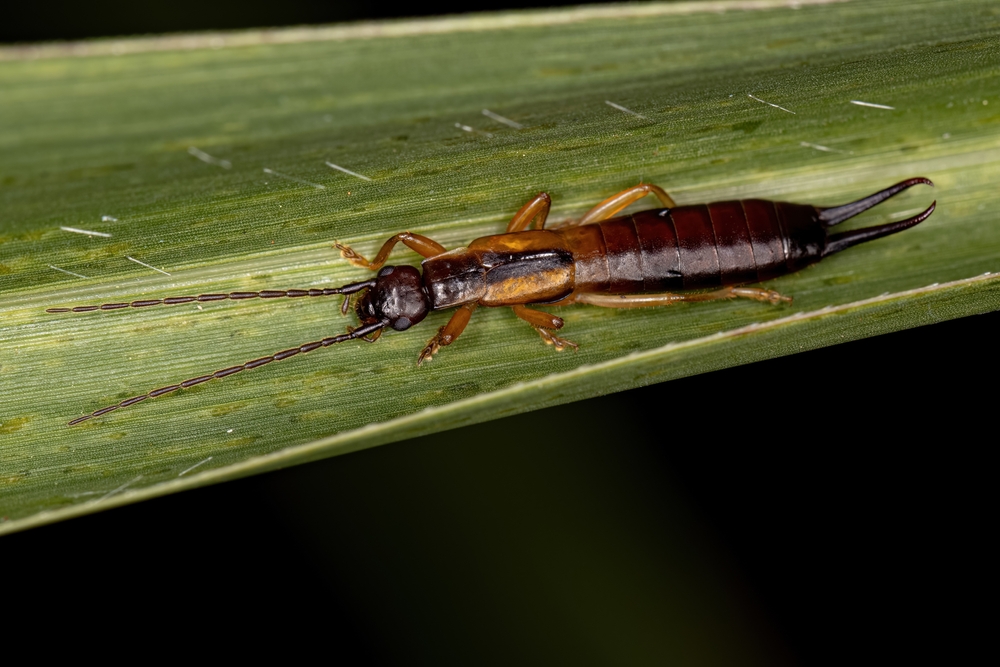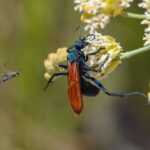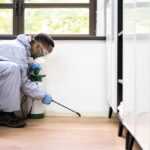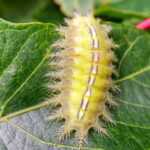Pincher Bug: Essential Guide to Identifying and Controlling
Learn how to identify and control pincher bugs effectively. Get practical tips and solutions to manage these pests in your home. Read more now!
Pincher Bug Control: Top Tips for Managing These Pesky Insects
Have you noticed pincher bugs around your home or garden and want to know what they are and how to deal with them? This article will help you identify pincher bugs, understand their habits, and provide effective tips for managing them.
- Pincher bugs, or earwigs, are harmless to humans and play a role in natural pest control by preying on garden pests.
- They thrive in dark, damp environments and prefer to live under stones or in mulch, making moisture control key for prevention.
- Effective pest control strategies include sealing entry points, managing moisture levels, and using traps or professional services for infestations.
What Are Pincher Bugs?
Pincher bugs, more commonly known as earwigs pinch, belong to the insect order Dermaptera. With over 2,000 species worldwide, these insects are easily recognized by their unique forcep like pinchers located at the end of their abdomen. These forcep like pinchers are used primarily for defense and capturing prey, and while they can pinch when threatened, they do not bite. Besides their pincers, earwigs have both forewings and hindwings, though they rarely use them for flight.
These nocturnal insects prefer dark and damp environments, seeking shelter during the day and becoming active at night. Despite their somewhat menacing appearance, earwigs live have been around for approximately 208 million years, playing a significant role in their ecosystems. Most earwigs are harmless despite their appearance.
The common belief that earwigs crawl into people’s ears is just a myth. There is no evidence to support this misconception.
Identifying Pincher Bugs
Identifying pincher bugs is relatively straightforward due to their distinctive features. They generally have a brownish color, which can vary from dark brown to reddish-brown or even black. Their most notable characteristic is the pair of forceps-like pincers at the end of their abdomen. Male earwigs possess long and curved pincers. In contrast, female earwigs have shorter and straighter pincers.
In the United States, there are over 20 recognized many earwig species. The common earwig, often found in gardens, can range in size from as small as 5 mm to as large as 25 mm. These differences in size and color can help you distinguish pincher bugs from other insects you might encounter.
Common Pincher Bug Species
Pincher bugs, or earwigs, are a diverse group of insects with over 2,000 earwig species found around the world. Among the most common are the European earwig, Asian earwig, and American earwig. The European earwig is especially widespread in North America and is easily recognized by its reddish brown color and prominent forcep-like tail. Female earwigs of this species are known for their remarkable parental care, guarding their eggs and young nymphs in nests made from decaying plant material until the nymphs are ready to venture out on their own.
Other earwig species, such as the Asian earwig, are often found in gardens where they feed on decaying plant and other plant material, helping to break down organic matter. While all earwigs share the characteristic pincers, their size, color, and habits can vary. Understanding which earwig species are present in your area can help you better manage these bugs and protect your garden plants from potential damage.
Where Do Pincher Bugs Live?
Pincher bugs thrive in environments that provide ample moisture and shelter. Outdoors, they are commonly found beneath stones, boards, and mulch, or in heavily thatched lawns and flowerbeds. They also find shelter beneath stones and similar objects, and are commonly found in decaying wood. Decomposing plant material, which provides both food and a humid habitat, is particularly attractive to them. Earwigs are attracted to environments with moisture and decaying organic matter.
Indoors, these bugs are often found indoors in dark, damp places like crawl spaces, unfinished basements, kitchens, and bathrooms. They are particularly drawn to areas with high humidity, such as around plumbing lines.
Understanding these habitats can help you take steps to make your home less inviting to these unwanted guests, as pincher bugs seek a suitable environment with moisture and shelter. If outdoor conditions become unfavorable, pincher bugs may move indoors in search of a more suitable environment.
What Do Pincher Bugs Eat?
Earwigs eat a wide range of materials due to their omnivorous and scavenging nature. Pincher bugs are omnivores and scavengers, primarily consuming decomposing plant material and small insects. Their diet includes a variety of organic materials such as fungi, mold, and decaying plants, as well as plant matter and animal matter, including dead animal material. This diverse diet helps in nutrient recycling within their ecosystems.
Their preference for damp environments often leads them to habitats rich in decaying organic matter. While they might occasionally nibble on living plants, earwigs may also feed on young foliage and various crops, especially when their populations are high. However, their primary diet consists of dead or decaying plant material, helping to keep your garden clean and healthy.
Are Pincher Bugs Dangerous?
Despite their fearsome appearance, scary looking pinching bugs are generally harmless to humans. Pinching bugs only pinch humans when they feel threatened, and they rarely break the skin. They do not spread disease to humans or pets. The question “are earwigs dangerous” often comes up, but earwigs are not dangerous.
The widespread superstition that earwigs crawl into people’s ears or human ears and lay eggs in the brain is just that—a myth.
While their pinches can cause a slight pinch or discomfort, pincher bugs do not pose any serious health risks. They are more of a nuisance than a danger, and understanding this can help you manage your fear and focus on effective pest control strategies.
Reproduction & Life Cycle of Pincher Bugs
The reproductive habits of pincher bugs are quite fascinating. During mating, the female raises her abdomen while the male grabs her with his pincers and twists his abdomen 180 degrees. This process can last for several hours. Female pincher bugs typically lay their eggs in the spring.
What sets earwigs apart is their exceptional parental care. Female earwigs meticulously lick each egg to prevent fungal growth and protect their eggs until they hatch. Even after the eggs hatch, the mother continues to tend to her young, ensuring their survival. This level of care is quite rare in the insect world.
How to Prevent a Pincher Bug Infestation
Preventing an infestation of pincher bugs starts with controlling moisture levels around your home. Maintaining proper drainage, such as using gravel near the foundation, can help keep excess moisture at bay and prevent earwigs. Indoors, using dehumidifiers and fixing any leaks can make your home less appealing to these pests. Be sure to notice earwigs in damp areas like basements or bathrooms, as this can be an early sign of a potential infestation. It’s also important to note that pincher bugs do not infest food supplies or damage food supplies, so your pantry items are safe.
Sealing small cracks around doors and windows is another effective measure. Be sure to caulk windows and seal foundation cracks to block entry points and prevent earwigs from getting inside. By eliminating potential entry points, you can significantly reduce the likelihood of pincher bugs invading your home. Additionally, keeping outdoor areas tidy by trimming grass and removing organic debris can deter earwigs from nesting near your home. Keep compost piles away from the house to reduce habitat for pincher bugs and further discourage them from approaching your property.
For an extra layer of protection, consider using homemade traps like rolled-up newspapers or containers filled with vegetable oil to capture pincher bugs. Diatomaceous earth sprinkled on the soil can also help eliminate these pests by dehydrating them. These practical tips can help you maintain a pincher bug-free environment.
Natural Pincher Bug Repellents
If you want to get rid of earwigs without resorting to harsh chemicals, natural repellents can be a great solution. Earwigs are attracted to damp areas, decaying plant material, and the presence of other insects, so the first step is to eliminate these attractants. Remove piles of decaying vegetation, fix any leaks, and keep your garden and home as dry as possible.
For added protection, try sprinkling diatomaceous earth around the perimeter of your home or garden beds—this natural powder dehydrates and kills earwigs on contact. Citrus sprays and essential oils like peppermint and lavender can also be effective; simply mix a few drops with water and spray around entry points or areas where earwigs are likely to hide. By combining these natural repellents with good sanitation practices, you can help prevent earwig infestations and keep these insects at bay.
Earwig-Resistant Plants
Creating a garden that is less appealing to earwigs starts with choosing the right plants. Earwigs tend to avoid plants with thick, waxy leaves or tough stems, such as succulents and cacti. Plants with strong scents, like garlic and hot peppers, are also less likely to suffer from an earwig infestation. On the other hand, earwigs are more attracted to softer, tender plants like lettuce and marigolds, which can be more vulnerable to damage.
To further protect your garden, consider using companion planting techniques. For example, planting marigolds alongside tomatoes can help deter earwigs and other pests, as the scent of marigolds is known to repel many insects. By selecting earwig-resistant plants and using smart planting strategies, you can reduce the risk of pests and enjoy a healthier, more productive garden.
Effective Methods to Get Rid of Pincher Bugs
If you find yourself dealing with an infestation, there are several effective methods to get rid of pincher bugs. To find earwigs, check common hiding spots such as damp areas, under piles of leaves, or in cluttered spaces both inside and outside your home. You may notice more earwigs during spring and summer, as their populations increase and they become more visible, which may require more persistent control methods. Start by keeping your home dry and uncluttered, and sealing any cracks where they might enter. Removing these bugs immediately can prevent further infestations.
Other Insects That Resemble Pincher Bugs
Several insects can be mistaken for pincher bugs, including:
- Cockroaches, which have flat bodies and long antennae
- Silverfish, which are elongated, shiny silver-grey insects with three bristle-like tails
- Firebrats, which are similar to silverfish but are darker brown and thrive in warmer environments
Rove beetles, with their elongated bodies and short wing covers, can also be confused with earwigs. Understanding these differences can help you accurately identify pincher bugs and take appropriate action.
Why Pincher Bugs Are Beneficial
Despite being seen as pests, pincher bugs provide several ecological benefits. They are significant predators of pests like aphids, contributing to natural pest control in gardens. By preying on insect eggs and other small pests, they help keep pest populations in check.
Moreover, pincher bugs play a role in decomposing organic matter, enriching the soil and promoting healthy plant growth. Their presence in your garden can actually be beneficial, helping to maintain a balanced ecosystem.
Pincher bugs, while often seen as a nuisance, are generally harmless to humans and play an important role in the ecosystem. Understanding their habits, diet, and life cycle can help you effectively manage and prevent infestations. Practical tips and professional pest control services from Responsible Pest & Scorpion Control can ensure that your home remains pincher bug-free.
Remember, while these insects might look intimidating, they are beneficial in many ways, from natural pest control to soil enrichment. Embrace this knowledge, and you’ll be well-equipped to handle any pincher bug situation with confidence.
Frequently Asked Questions
What are pincher bugs attracted to?
Pincher bugs are drawn to moist trash cans filled with decaying matter, so make sure to take out your trash regularly. Keeping your bins clean will help keep these pests at bay!
What causes pincher bugs in house?
Pincher bugs usually invade your home through small cracks and crevices, so sealing these gaps is key. Additionally, fixing any leaky pipes can help reduce moisture, making your home less appealing to them.
Are pincher bugs harmful?
Pincher bugs aren’t harmful to humans, but they can cause damage to your furniture and garden. It’s best to deal with them promptly to prevent any destruction to your plants and home!
Are pincher bugs dangerous?
Pincher bugs are generally harmless to humans; their pinches might be surprising but are not strong enough to cause any real harm. So, there’s no need to worry about them!
How can I prevent pincher bugs from entering my home?
To keep pincher bugs out, focus on controlling moisture, sealing cracks around entry points, and maintaining a tidy outdoor space. A little prevention goes a long way!



